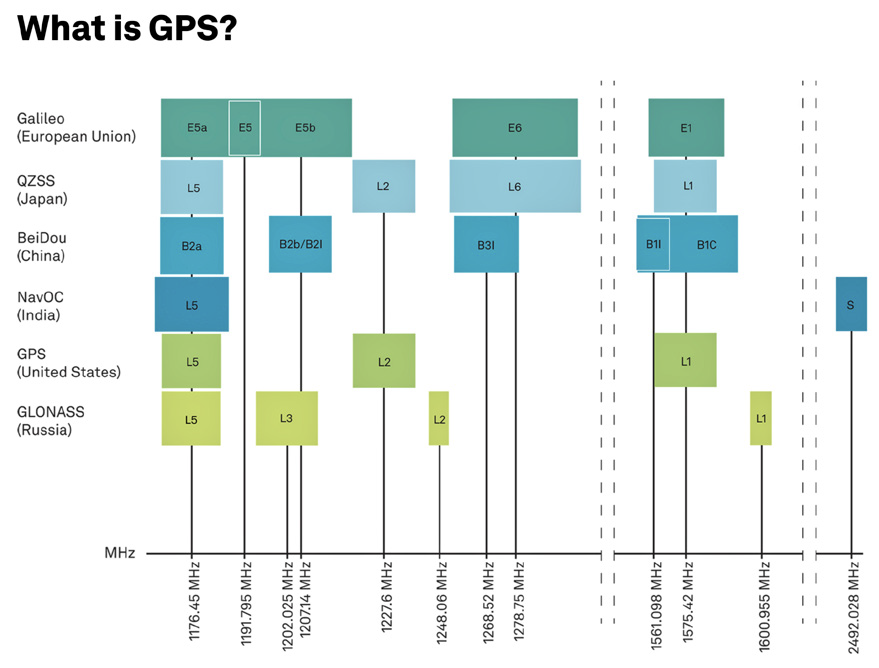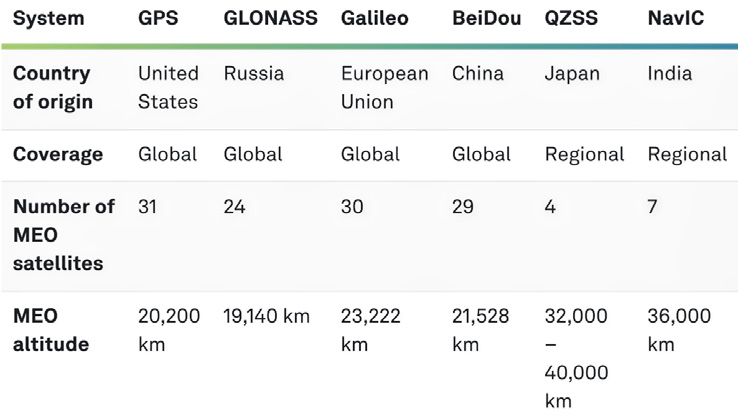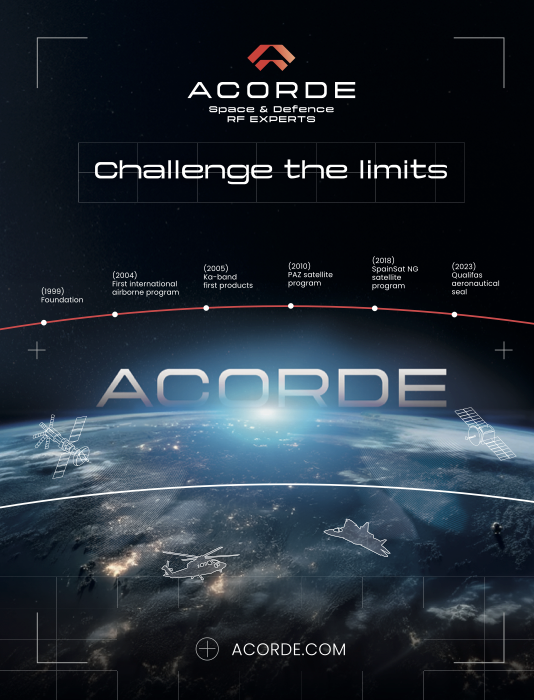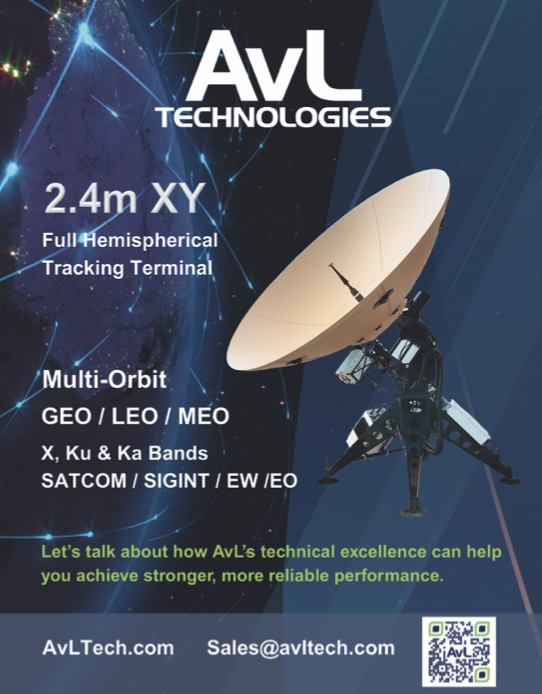Hexagon NovAtel editorial team
Whether you are on the field of battle or responsible for critical infrastructure, GNSS signal jamming is becoming your biggest threat.

Almost everything we count on in our lives today depends on GNSS timing, including navigation, communications, transportation, agriculture, the Internet and banking.
The military relies on it for even more.
As geopolitical crises increase in our world, jamming and spoofing are impacting the services we count on. When GNSS signals are jammed for any reason—malicious or unintentional—your operations are at risk. And jamming is increasing.
Why low latency in the GAJT-310 provides worry-free implementation
To stay ahead of the jamming threat, you need an affordable, effective solution you can implement easily and immediately. And that is exactly what you get with the new GAJT-310.
This GAJT is latest in an extensive line of powerful anti-jam technology, the low latency of the smallest
GAJT yet has a huge advantage. Latency refers to any delay of data transmission. The lower the latency, the better for you.
The keys are ease and immediate. The GAJT-310 anti-jam antenna system minimises the delay between detecting jamming and providing output to the receiver.
In timing operations where multiple pieces of equipment must be synchronised, adjusting the other receivers for a higher latency delay requires complex calculations, which is a barrier to quick implementation.
The GAJT-310 has a latency of just 30 nanoseconds, which requires no adjustment to operate with other radios, receivers or electronic timing equipment. In a nutshell, it means GAJT-310 can protect you immediately as there are no complex calculations required to adjust for a delayed response time. So, it’s quick and easy to integrate into your operations.
Is the difference between high latency and low latency that significant?
(see page for additional information)

Yes. GNSS signals travel from a satellite at the speed of light which is 186,000 miles per second. When you translate this into nanoseconds (a billionth of a second), the distance light travels is one foot.
The delay with higher latency anti-jammers can be as much as 130,000 nanoseconds, which translates to almost 25 miles! That difference is why GAJT-310 technology is so important.
Admiral Grace Hopper, one of the first programmers of the Harvard Mark I computer, wanted to understand how a nanosecond could be understood as a measurement.
She asked engineers to cut a wire showing her the distance electricity travels in a nanosecond—that’s 11.8 inches long—less than one foot, compared to a microsecond— that’s 984 feet.
Low latency means you can put the GAJT-310 to work protecting your signals right away – no additional set-up or complex calculations. Just plug in and protect.
And low latency is just the beginning. The other advantages of the GAJT-310 are considerable:
• Trusted technology since 2011
• Military forces around the world trust GAJT technology thanks to its battle-tested history, integration support and manufacturing quality.
• Best protection per gram/ounce
Incorporating everything we learned from successful deployment of the GAJT-710 and GAJT-410.
• More value and flexibilty
Available as an integrated enclosure (one piece) or a federated solution (separated anti-jam electronics and 3-element CRPA) for integration into small platforms.
• Protection for more GNSS signals
On the L1 and L2 bands with 30 dB of suppression.
• Non-ITAR, commercial off-the-shelf technology
Easily installed on land, sea or air platforms (new or legacy fleets).
Everything about the GAJT-310 was designed to make proven anti-jam protection more accessible, it’s commercial off-the-shelf technology and available right now. Low-latency means it can be operational fast and it’s from a leader with over 30 years in anti-jam so it is technology you can trust.
GNSS vs. GPS
Understanding the differences
What is the difference between GNSS vs. GPS?
The easiest way to think of it is that GPS is a type of GNSS.
While the terms are often used interchangeably, such as how Band-Aid is used synonymously to refer to any adhesive bandage, there are some differences between the two. Let’s start with some basic terminology.
What are GNSS?
GNSS stands for Global Navigation Satellite Systems, which is a generic term used to describe the collection of satellite constellations in operation.

Constellations are groups of satellites orbiting the Earth, working together for a specific function, namely to support highly accurate positioning, navigation and timing (PNT) measurements worldwide.
Satellites are deployed in constellations as they provide more continuous coverage of an area when compared to a single satellite. Essentially, at any given time, multiple satellites are visible from any place on the Earth’s surface.
Satellite constellations operate in one of three orbits or regions in space:
Low Earth Orbit (LEO)—an orbit that is relatively close to Earth’s surface, specifically under altitudes of 2,000 kilometres.
Medium Earth Orbit (MEO)—an orbit with an altitude range typically between 2,000 to 36,000 kilometres above the Earth’s surface.
Geostationary Earth Orbit (GEO)—an orbit with an altitude of 35,786 kilometres above the Earth’s surface, specifically at the equator matching the Earth’s rotation.
These satellite constellations use radio frequencies in the L-Band to transmit their signals. However, each constellation may choose different frequencies and corresponding labels for these signals.
GNSS positioning equipment typically receives at least two frequencies. As the number of constellations and signals increases, the more complex the GNSS spectrum becomes.

This illustration outlines where on each constellation and its signals are broadcast on the RF spectrum.
GPS stands for Global Positioning System and was launched in the late 70’s by the then Department of Defense (now the Department of War). This was the first GNSS system and is currently operated by the U.S. Space Force (USSF).
Today, GPS is the most widely used GNSS in the world and provides global coverage and is one of four constellations that are currently orbiting the Earth with around 31 satellites on-orbit.
Differences between GNSS vs. GPS
Back to the original question... While GNSS and GPS can and do work together, the main difference between them lies in the equipment required to use them.
For example, GNSS receivers can access satellites from different constellations, while GPS receivers may only be able to receive signals from satellites in the GPS system.
Add to that, a multi-constellation, multi-frequency GNSS receiver receives signals from many different systems simultaneously, offering more accurate, redundant and available coverage.

How does GPS compare to other constellations?
Instead of GNSS vs. GPS, a far better way to consider these technologies is how GPS compares to other GNSS constellations.
There are currently four global and two regional constellations, each operated by different countries. While the basic concept of how constellations work is identical, there can be some key differences in how they operate that are important to note.
This difference includes the number of satellites, their orbital planes, frequencies, signals, etc. The table at the top of this column summarizes the key characteristics of each constellation.
hexagon.com
novatel.com



